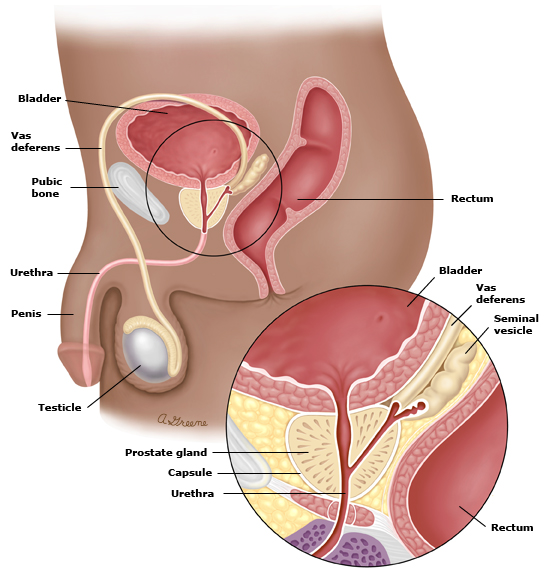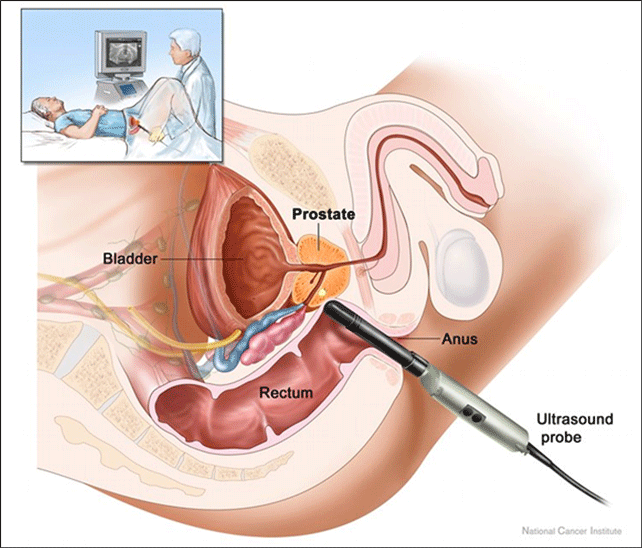Tackling Prostate Cancer in Malaysia: Importance of Early Screening
04 April 2019
What is Prostate Cancer?
The prostate gland makes the fluid that forms part of semen. This gland sits below the bladder, above the rectum, and around the urethra.
Prostate cancer happens when functioning cells in the prostate gland become malignant and grow out of control.

The Difference Between Prostate Cancer and Benign Enlargement
Prostate cancer differs from benign prostate enlargement (BPE), where abnormal cell growth begins in the inner part of the prostate, and gradually tightens around the urethra, leading to urinary symptoms.
Meanwhile, benign prostatic enlargement or hyperplasia begins in the inner prostate, where a ring of tissue forms a circle around the urethra. In this scenario, abnormal cells grow inwards and towards the prostate’s core, gradually tightening around the urethra, which interferes with normal urination.
Existing conditions of an enlarged prostate do not increase the likelihood prostate cancer.
While prostate enlargement produces nagging symptoms akin to urinary infections and bladder stones, prostate cancer often occurs silently, producing no symptom for months or years on end.
Prostate enlargement is the fourth most common diagnosis in older men. It affects half of all men over 50, and 9 out of 10 men over 80. These numbers are similar across the world.
Prevalence of Prostate Cancer in Malaysia
Prostate cancer, on the other hand, is much less common in Asian men than their Caucasian and Black counterparts. It is among one of the biggest causes of cancer deaths in American and European men. In Malaysia, there were 594 prostate cancer-related deaths in 2018.
Notwithstanding the high survival rate, prostate cancer remains a significant issue as the fourth most common cancer among Malaysians of all ethnicities, and the second most common form of cancer among Indians.
Prostate cancer most often affects men above 50 years old. Most men do not die from it, since the cells usually grow slowly.
Risk of Late Prostate Cancer Treatment: Busting Inertia
Men are often less proactive in seeking medical advice, which can result in delayed diagnoses and more severe health outcomes. In Malaysia, many men discover their prostate cancer after persistent urinary problems. Regular medical screenings, such as PSA testing (prostate-specific antigen test) and ultrasound examinations, can help detect an enlarged prostate, prompting doctors to recommend a prostate biopsy.
Men with a family history of prostate cancer are at a higher risk, with an increased likelihood of developing the disease by 68%. Therefore, men with such a history should consider prostate cancer screening to detect early signs and initiate treatment if needed.
How Prostate Cancer is Diagnosed?
Screening includes the prostate-specific antigen (PSA) test— a simple blood test— and the digital rectal exam (DRE). At DRE, the urologist feels for abnormal areas surrounding the prostate, since the cancer usually begins in the peripheral zone of the gland.
If the urologist suspects cancer, he would then take a small sample of the prostate tissue for biopsy, to be looked at under a microscope, which would decide the outcome of the diagnosis. Occasionally, an MRI scan is also requested to locate the abnormal growth.

Treatment for Prostate Cancer
Once diagnosed, the next step is staging the cancer to determine how far it has spread. Stage 1 prostate cancer typically grows slowly and may not cause any symptoms, while stage 4 prostate cancer, where the cancer has spread to other parts of the body, requires more intensive treatment.
Since many prostate cancers grow slowly and may not cause immediate harm, some older patients may opt for active surveillance rather than aggressive treatment. Younger patients, on the other hand, may undergo more active treatment to manage the cancer.
Treatment options for prostate cancer include:
- Chemotherapy: Used for aggressive forms of cancer that have spread beyond the prostate.
- Radiotherapy: Targeted radiation therapy can shrink or eliminate cancer cells.
- Hormone Therapy: This reduces the levels of hormones that fuel cancer growth.
- Surgery: In some cases, prostate cancer surgery may be necessary to remove the prostate gland.
For those with early-stage prostate cancer, the best treatment for prostate cancer in early stages often involves surgery or radiotherapy, offering a high success rate and minimal impact on quality of life.
Conclusion
Prostate cancer becomes more likely as a man grows older, and its prevalence may increase with the ageing population. Early diagnosis through regular prostate cancer screening offers a better chance for successful treatment and a higher prostate cancer survival rate. With advancements in treatment, including proton therapt for prostate cancer, men diagnosed with prostate cancer can manage the disease effectively, maintaining a good quality of life.






